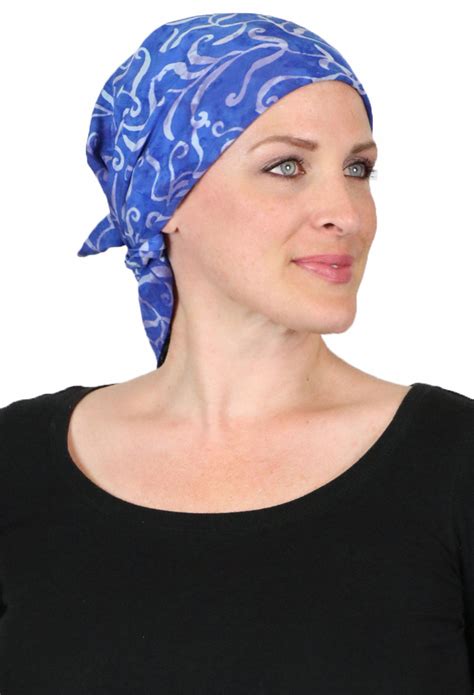Introduction
Dealing with cancer is a challenging journey that can take a toll on both physical and emotional well-being. One of the common side effects of cancer treatment, particularly chemotherapy, is hair loss. This can be a significant source of self-consciousness and distress for women. Head scarves offer a practical and stylish solution to this issue, providing comfort, warmth, and confidence.

Benefits of Head Scarves for Women with Cancer
- Cover hair loss: Head scarves discreetly conceal hair loss, allowing women to feel more comfortable and secure in social situations.
- Protect the scalp: Scalps can become sensitive and vulnerable after cancer treatment. Head scarves provide a protective layer against sun exposure, cold temperatures, and friction.
- Reduce friction: Scarves reduce friction between the scalp and clothing or hair pillows, minimizing discomfort and irritation.
- Manage moisture: Head scarves can absorb moisture from sweat or spills, keeping the scalp dry and comfortable.
- Promote warmth: Head scarves provide warmth, especially during cold weather or after radiation therapy.
- Enhance confidence: By concealing hair loss, head scarves can improve self-esteem and confidence, enabling women to focus on their recovery.
Types of Head Scarves for Women with Cancer
There is a wide variety of head scarves available, catering to different tastes, preferences, and needs. Some common types include:
- Pre-tied scarves: These scarves come with a pre-determined knot or closure, making them easy to put on and take off.
- Square scarves: Versatile and customizable, square scarves can be folded and tied in various ways to create different styles.
- Rectangular scarves: Longer and narrower than square scarves, rectangular scarves offer more coverage and can be wrapped around the head multiple times.
- Turbans: Turbans are pre-shaped head coverings that provide full coverage and are often intricate or decorative.
- Chemo caps: Designed specifically for women with cancer, chemo caps are made of soft, comfortable fabrics that are gentle on sensitive scalps.
Choosing the Right Head Scarf
When choosing a head scarf, consider the following factors:
- Comfort: The scarf should feel soft and comfortable against the skin, especially on sensitive scalps.
- Coverage: Determine the level of coverage you need, whether it’s full coverage like a turban or partial coverage like a square scarf.
- Style: Choose a scarf that complements your personal style and makes you feel confident.
- Fit: Ensure that the scarf fits securely on your head without being too tight or too loose.
- Material: Look for fabrics that are breathable, lightweight, and easy to clean.
Tips for Wearing Head Scarves for Women with Cancer
- Moisturize your scalp: Apply a moisturizer to your scalp to reduce dryness and irritation.
- Protect your scarf: Use a scarf protector or liner to prevent friction between the scarf and your hair or scalp.
- Experiment with styles: Try different tying techniques and folds to find the most comfortable and flattering style for you.
- Accessorize: Add embellishments like pins, beads, or hair clips to personalize your scarf and make it more stylish.
- Be yourself: Wear a scarf that makes you feel comfortable and confident. Don’t be afraid to experiment and find what works best for you.
Supporting Women with Cancer
For friends, family, and caregivers, supporting women with cancer can include offering practical help such as:
- Helping them choose and purchase head scarves
- Assisting them with tying and styling scarves
- Encouraging them to experiment with different looks
- Providing emotional support and listening to their concerns
Resources for Women with Cancer
- American Cancer Society: https://www.cancer.org/treatment/treatments-and-side-effects/physical-side-effects/hair-loss/head-coverings.html
- National Cancer Institute: https://www.cancer.gov/about-cancer/treatment/side-effects/hair-loss
- Look Good Feel Better: https://www.lookgoodfeelbetter.org/
Conclusion
Head scarves offer comfort, warmth, and confidence for women with cancer who experience hair loss. By understanding the different types of scarves available and choosing the right one for your needs, you can find a stylish and practical solution that helps you cope with this side effect and focus on your recovery.
